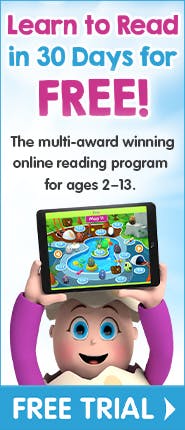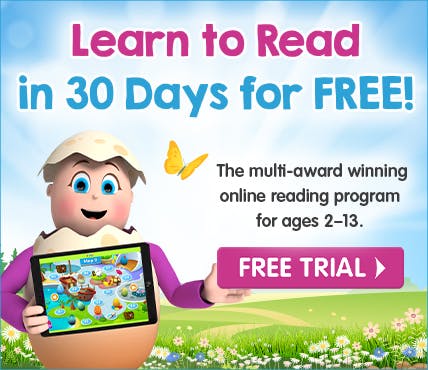


What is Guided Reading

Guided Reading is an essential part of any early literacy programme. In a guided reading session within the classroom, students are placed into small groups according to their level of reading ability. Of course, even in a small group there are differences in reading ability, as every student is different. These students, who are roughly at the same reading level then read a text that is specifically chosen for their particular group, so that the children are able to read the text independently, without too much difficulty (the aim is about 95% accuracy).
The teacher may model reading the book to the kids, and then the students read the text independently and individually. The reason that children are encouraged to read individually is so there are no comparisons made between reading ability or style (as that was one of the downsides of the earlier style of small group reading, where students of different abilities had to sit together and read a book round-robin style, which of course, had the unfortunate side-effect of creating more opportunities for students to compare themselves with others, perhaps in an unhelpful way).
The goal of any reading instruction is to build reading comprehension and fluency in a child’s reading. Teachers and parents, of course, want children to read well, and in so doing, understand what they read. There are five essential elements of any good reading programme:
Phonemic awareness
Phonics skills
Fluency in reading
Vocabulary building
Text comprehension
These five elements are essential to any effective means of reading instruction, and guided reading is an essential part of any good reading programme. But, how does guided reading develop and use these five essential elements of reading instruction? And can they be achieved outside of the classroom using a reading programme?
Phonemic Awareness and Phonics
Guided reading allows students to use and develop their phonemic awareness (their understanding that words are made up of smaller units of sound) and their knowledge of phonics (that small units of sound directly relate to individual or small groupings of letters) within the context of reading. Researchers are quick to state that phonics instruction and phonemic awareness are not terribly effective when isolated from reading texts. Reading texts that are at the student’s reading level, and related to recent phonics instruction and/or recently acquired phonemic awareness further instils this knowledge.
The Reading Eggs programme allows students to participate in guided reading both in school and at home. Reading Eggs uses a comprehensive phonics and phonemic awareness programme that offers instruction within both of these key literacy areas, but also places these skills within the context of reading real texts. By Lesson 9, students are reading their first book. All the books in the first 60 lessons are easily decodable and pitched right at the early reader’s level, and provide students with on-level reading material where they can practise the skills learned in each lesson. All the words they encounter in the reading books have been introduced and reinforced within the Reading Eggs lessons.
Fluency
Guided reading allows for explicit instruction in fluency. The chosen text is matched to a child’s reading ability, so that the student can confidently read most of the text. Where there are unknown words, the student is able to use recently acquired, or current knowledge of phonics and phonemes to work out the sound of the word. By understanding the surrounding text, the student is then able to put the word in its context and gather meaning from its place within the larger text. In a classroom setting, the teacher is able to model fluent reading for the unfamiliar parts of a text, or praise the fluent reading that the student demonstrates. The markers of fluency are not just reading fast, on the contrary, it is more about the markers of reading that demonstrate understanding, such as pausing, phrasing, intonation, word stress, and rate.
The Reading Eggs online Story Books reinforce the skills learned in the previous lesson(s) with a story that makes sense and is created using matching high-quality, full-colour illustrations. These real books are read aloud by the narrator who models fluent reading to the child. The child can read along with the voice, and the audio can then be turned off for the child to reread the book independently. These books enhance the student’s experience, motivation, and above all, level of achievement, as the learning is placed in the context of reading a book that is at the child’s reading level and is interesting to look at and read.
Vocabulary
Guided reading provides daily opportunities to expand vocabulary through reading, conversation and explicit instruction.
The Reading Eggs programme accommodates children with a wide range of abilities, including children with more limited vocabularies. The Reading Eggs programme assists with vocabulary development by ensuring that all content area words are introduced with visual support, such as a matching picture, which provides context and increases word knowledge and word retention.
Much vocabulary is acquired by reading a wide variety of texts, and reading storybooks is one of the most powerful means to expand vocabulary. The Reading Eggs lessons contain more than 100 e-books, offering students almost a limitless array of texts to read.
Text Comprehension
In order to efficiently read and understand text, readers need exposure to a wide variety of texts. Text comprehension relates both to the understanding of the content of a text as well as understanding what kind of text they are reading. Readers must learn how to adjust to the different types of text they read, and the only way that they are going to learn how to accommodate a variety of texts, is by actually reading a wide variety of texts.
Reading Eggs offers students a suite of instructional materials in an engaging and rich learning environment. Each lesson is presented in the same structure: an introductory instructional animation, followed by a series of activities that build word knowledge and automaticity. The student then gets to progress to the reading of a new book, which could either be an alphabet book, a story or a nonfiction title. This structure highlights the importance of reading extended meaningful text.
Testimonials
Thank you for providing a fantastic resource that ALL of my class love! They are able to access the learning experiences at their own instructional level and work independently, both at school and from home.
- Peta Bullen, Tewantin State School
My 7-year-old has learning challenges in the area of reading and resists reading. He took to Reading Eggs immediately and has never complained about doing the programme. He loves the variety of activities and especially earning the characters. He is making good progress with his skills. Today we sat down to read a new book and I was having him read all the words that didn’t overwhelm him in length. He protested that this was a Level 2 reader and was very pleased when I told him that he is now reading at that level. I am very pleased with this program and it is very affordable.
- Becky M.


